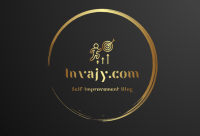Achieving Work-Life Balance
Achieving work-life balance isn’t about equal hours but finding fulfillment. Actionable tips to help you achieve a sustainable work-life balance.

And, In today’s fast-paced world, finding a balance between work and personal life can feel like an elusive goal. The lines between personal life and work life are becoming increasingly blurred, especially if you work for yourself and/or work from home. With the rise of remote work, constant connectivity, and the increasing demands of modern jobs, many people struggle to maintain a harmonious balance. Now more than ever, we need the skills to look after ourselves so that we can perform well at work, achieve our personal and professional goals, be there for our loved ones, and feel our best. Statistics show that more than 60 percent of U.S. employees feel like their work-life balance is out of whack. This comprehensive guide delves into practical strategies, psychological insights, and actionable tips to help you achieve a sustainable work-life balance.
What is Work-Life Balance?
There’s an old misconception that “work–life balance” means spending equal amounts of time on work and non-work life (like balancing out two sides of a measuring scale), but that’s not true. Balance is not a one-size-fits-all equation; for some, it might mean dedicating just a few hours each day to work, while others thrive on the structure of a longer work day.
At its core, a healthy “work–life balance” essentially just means feeling fulfilled in both realms of your life—your professional endeavors and your personal pursuits. Bringing a equilibrium between the demands of your career and the responsibilities or pleasures of your personal life. Achieving this balance means neither aspect overwhelms the other, resulting in a profound sense of satisfaction and well-being.

Therefore, finding balance isn’t just a case of working fewer hours, working from home two days a week, or being able to finish work in time to pick the kids up from school. It goes much deeper than that to encompass a more holistic view of how you look after yourself and spend your time. Taking this wider view, finding balance means:
- Managing your workload effectively and meeting deadlines without working all hours.
- Establishing clear boundaries between work and non-work life so you’re not worrying or thinking about work all the time.
- Cherishing quality time with loved ones—be it your children, partner, friends, or anyone who enriches your life.
- Nurturing your passions and hobbies that bring joy and fulfillment.
- Prioritizing both physical and mental well-being to maintain overall health and resilience.
In essence, achieving work-life balance is about crafting a life where both work and personal pursuits thrive in harmony, enhancing your overall quality of life.
Why is a Healthy Work-life Balance Important?
A healthy work-life balance is important for many reasons, including:
- Mental Health: Chronic stress from work can lead to burnout, anxiety, and depression. A balanced life reduces these risks.
- Physical Health: When you’re overworked, tired, or stressed, your health can suffer, leading to symptoms like the flu, cardiovascular disease, obesity, chronic fatigue, and respiratory problems.
- Productivity: Well-rested and balanced individuals are generally more productive and engaged in their work.
- Better Focus: A healthy work-life balance can help you focus on a single task without being distracted.
- Relationships: Quality time with family and friends enhances personal relationships and social support systems.
- Job Satisfaction: People who have a good work-life balance are more likely to be satisfied with their jobs and remain loyal to their employers.
Identifying the Imbalance
Now, the question must be arising in your mind, when work-life balance is not one-size-fits-all equation, how to indentify that there is imbalance. Here are the signs of unhealthy work-lfe balance:
- Too much to do: Feeling like you have too much to do, all the time.
- Neglecting Personal Interests: Lack of time for hobbies or activities you once enjoyed.
- Reduced Quality Time with Loved Ones: Missing important family events or not spending enough time with friends. You start receving complains from near ones that you are not giving sufficient time to them.
- Constant Fatigue: Feeling drained even after a full night’s sleep.
- Sleeping less: Struggling to get to sleep or to stay asleep.
- Increased Stress: Feeling overwhelmed by work demands and unable to relax.
- Perfectionism: Perfectionism often signals an unhealthy work-life balance, where relentless pursuit of flawlessness overshadows personal well-being and satisfaction.
- Time for Yourself: Never have time for yourself. You start missing the “me time”. Do not get time for self-care.
- Talking about Work: Always talking about work, even when they’re not at work.
Self-Assessment
To identify where the imbalance lies, start by assessing your current situation:
- Work Hours: Are you consistently working overtime?
- Personal Time: Do you have regular breaks and personal time?
- Stress Levels: Are you experiencing high levels of stress related to work?
Strategies for Achieving Work-Life Balance
Now, I will share with you how to find more balance:
Set Clear Boundaries
- Define Work Hours: Set specific start and end times for your workday. Avoid checking work emails or taking calls outside these hours.
- Create a Dedicated Workspace: If you work from home, having a separate area for work helps you mentally disconnect from work when you leave the space.
- Communicate Boundaries: Inform your colleagues and supervisors about your working hours and availability. This helps manage their expectations and encourages respect for your personal time.
Prioritize Time Management
- Use a Planner: Utilize digital or physical planners to schedule tasks, appointments, and personal activities. Prioritize tasks based on urgency and importance.
- Set SMART Goals: Specific, Measurable, Achievable, Relevant, and Time-bound goals help you stay focused and manage your time effectively.
- Avoid Multitasking: Focus on one task at a time to increase efficiency and reduce stress.
- Say No: Start syaing “no” to things that aren’t a priority for you. Yes, it’s good to help people whenever you can, but there will be times when their request clashes with your own priorities. In which case, learn to kindly but firmly say “no” (or “no, not now”).
- Eliminate Time-wasters: Eliminate the time-wasting aspects of your day. Such as those social media notifications that suck you into your phone, and before you know it, half an hour has gone by. Switch off app notifications, and ensure your social media activity (or news scrolling, or whatever) takes place on your terms, at times that suit you.
Embrace Flexibility
- Negotiate Flexible Hours: Discuss flexible working arrangements with your employer. Options might include adjustable start and end times or compressed workweeks.
- Consider Remote Work: If feasible, work from home part-time to save commute time and integrate work into your personal life more smoothly.
Foster Personal Well-being
- Prioritize Self-Care: Engage in activities that rejuvenate you, such as exercise, meditation, or hobbies.
- Maintain a Healthy Lifestyle: Eat a balanced diet, get regular exercise, and ensure adequate sleep to support overall well-being.
- Seek Professional Help: If stress becomes overwhelming, consider speaking with a mental health professional for support and coping strategies.
Build Support Systems
- Communicate with Loved Ones: Share your challenges and work demands with family and friends. Their understanding and support can make a significant difference.
- Seek Workplace Support: Utilize employee assistance programs or support networks within your workplace for additional help and resources.
- Join Professional Networks: Engage with professional organizations or groups related to your field to gain insights and support from peers who may have similar experiences.
Practice Effective Delegation
- Delegate Tasks: At work, delegate tasks to colleagues or team members to share the workload. At home, consider delegating responsibilities to family members.
- Empower Others: Encourage and train team members to take on responsibilities, which can help balance your workload and develop their skills.
Manage Stress Effectively
- Develop Coping Strategies: Practice relaxation techniques such as deep breathing, yoga, or progressive muscle relaxation to manage stress.
- Encourage Time Off: Holidays are not a luxury, annual leave is a necessity. A break from work will provide you with the chance to switch off and enjoy yourself, it is also a great opportunity to recuperate and recharge.
- Take Regular Breaks: Incorporate short breaks throughout your workday to recharge and prevent burnout.
- Establish a Relaxing Routine: Create a pre-sleep routine that promotes relaxation and improves sleep quality.
- Mindfulness: Try to live in the moment rather than always thinking about what has been and what might happen in the future.
- Embrace Imperfection: Perfectionism can lead to stress, so remind yourself that you don’t need to be perfect. You don’t need to be the best. Being good enough is, well, good enough!
Review your Finances
Do you really need a new car or laptop? Could you get some of the things you need second-hand? Can you manage in a smaller home? Can you ‘DIY’ parts of your home renovation? And, Can you bring lunch to work instead of relying on take away?
Research indicates that after covering basic needs, additional income doesn’t always translate to greater happiness. By spending less, you might reduce your work hours and enjoy more leisure time, enhancing overall well-being.
Evaluate and Adjust
- Regular Check-ins: Periodically assess your work-life balance and make adjustments as needed. Reflect on what’s working and what isn’t.
- Adapt to Changes: Be flexible and adapt your strategies based on changes in your personal life or work environment.
- Seek Feedback: Request feedback from colleagues, supervisors, and family members to gain insights into how you can improve your balance.
Tools and Resources
These tools and resources will help you to achieve healthy work-life balance:
Digital Tools
- Time Management Apps: Tools like Todoist, Trello, and Asana can help you organize tasks and manage time efficiently.
- Well-being Apps: Apps such as Headspace or Calm offer guided meditation and mindfulness exercises to support mental health.
- Productivity Trackers: Apps like RescueTime or Toggl help you monitor and manage your time effectively.
Professional Resources
- Career Coaches: Engage with career coaches to gain personalized advice and strategies for balancing work and personal life.
- Workshops and Seminars: Participate in workshops and seminars focused on stress management, time management, and work-life balance.
Support Networks
- Employee Assistance Programs (EAPs): Many organizations offer EAPs that provide counseling and support services for employees.
- Professional Organizations: Join industry-specific organizations that offer networking opportunities and resources related to work-life balance.
Wrapping Up!
Achieving work-life balance is not a one-size-fits-all approach but a dynamic and ongoing process. By setting clear boundaries, managing time effectively, embracing flexibility, and prioritizing personal well-being, you can create a balanced life that fosters both professional success and personal fulfillment. Regularly evaluate and adjust your strategies to adapt to changing circumstances and maintain a sustainable equilibrium.
Remember, work-life balance is a personal journey and requires continuous effort and adjustment. Embrace the process, seek support when needed, and celebrate your successes along the way.






